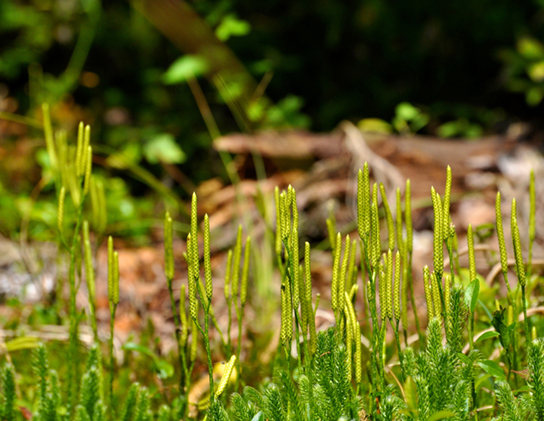| << Chapter < Page | Chapter >> Page > |
Bryophytes may have been successful at the transition from an aquatic habitat to land, but they are still dependent on water for reproduction, and absorb moisture and nutrients through the gametophyte surface. The lack of roots for absorbing water and minerals from the soil, as well as a lack of reinforced conducting cells, limits bryophytes to small sizes. Although they may survive in reasonably dry conditions, they cannot reproduce and expand their habitat range in the absence of water. Vascular plants, on the other hand, can achieve enormous heights, thus competing successfully for light. Photosynthetic organs become leaves, and pipe-like cells or vascular tissues transport water, minerals, and fixed carbon throughout the organism.
By the late Devonian period, plants had evolved vascular tissue, well-defined leaves, and root systems. With these advantages, plants increased in height and size. During the Carboniferous period, swamp forests of club mosses and horsetails—some specimens reaching heights of more than 30 m (100 ft)—covered most of the land. These forests gave rise to the extensive coal deposits that gave the Carboniferous its name. In seedless vascular plants, the sporophyte became the dominant phase of the lifecycle.
Water is still required for fertilization of seedless vascular plants, and most favor a moist environment. Modern-day seedless tracheophytes include club mosses, horsetails, ferns, and whisk ferns.
The club mosses , or phylum Lycopodiophyta , are the earliest group of seedless vascular plants. They dominated the landscape of the Carboniferous, growing into tall trees and forming large swamp forests. Today’s club mosses are diminutive, evergreen plants consisting of a stem (which may be branched) and microphylls ( [link] ). The phylum Lycopodiophyta consists of close to 1,200 species, including the quillworts ( Isoetales ), the club mosses ( Lycopodiales ), and spike mosses ( Selaginellales ), none of which are true mosses or bryophytes.
Lycophytes follow the pattern of alternation of generations seen in the bryophytes, except that the sporophyte is the major stage of the lifecycle. The gametophytes do not depend on the sporophyte for nutrients. Some gametophytes develop underground and form mycorrhizal associations with fungi. In club mosses, the sporophyte gives rise to sporophylls arranged in strobili, cone-like structures that give the class its name. Lycophytes can be homosporous or heterosporous.

Horsetails, whisk ferns and ferns belong to the phylum Monilophyta, with horsetails placed in the Class Equisetopsida. The single genus Equisetum is the survivor of a large group of plants, known as Arthrophyta, which produced large trees and entire swamp forests in the Carboniferous. The plants are usually found in damp environments and marshes ( [link] ).

Notification Switch
Would you like to follow the 'Bmcc 102 - concepts of biology' conversation and receive update notifications?